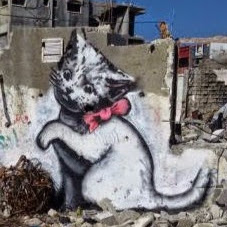Roger W Rogers
age ~71
from Lafayette, IN
- Also known as:
-
- Roger W Jacks
Roger Rogers Phones & Addresses
- Lafayette, IN
- Poughkeepsie, NY
- Lagrangeville, NY
- Ulster Park, NY
- Pompano Beach, FL
- Stone Ridge, NY
- High Falls, NY
- Tippecanoe, IN
- W Lafayette, IN
Us Patents
-
Redispatching Suspended Tasks After Completion Of I/O Operations Absent I/O Interrupts
view source -
US Patent:8495261, Jul 23, 2013
-
Filed:Dec 12, 2008
-
Appl. No.:12/333485
-
Inventors:Roger W. Rogers - Lagrangeville NY, US
Barry E. Willner - Briarcliff Manor NY, US -
Assignee:International Business Machines Corporation - Armonk NY
-
International Classification:G06F 3/00
G06F 5/00
G06F 13/24
G06F 12/00
G06F 13/00
G06F 9/26
G01R 31/08 -
US Classification:710 48, 710 6, 710 7, 710 20, 710 39, 710260, 711133, 711145, 711170, 711173, 711207, 370216
-
Abstract:Input/output (I/O) interrupts are avoided at the completion of I/O operations. A task requests (implicitly or explicitly) an I/O operation, and processing of the task is suspended awaiting completion of the I/O operation. At the completion of the I/O operation, instead of an I/O interrupt, an indicator associated with the task is set. Then, when the task once again becomes the current task to be executed, the indicator is checked. If the indicator indicates the I/O operation is complete, execution of the task is resumed.
-
Recovery Of Guest Virtual Machines After Failure Of A Host Real Machine
view source -
US Patent:46740384, Jun 16, 1987
-
Filed:Dec 28, 1984
-
Appl. No.:6/687073
-
Inventors:David P. Brelsford - Hyde Park NY
Daniel D. Cerutti - Kingston NY
Leslie S. Coleman - Rhinebeck NY
Gerald A. Davison - Ulster Park NY
Pamela H. Dewey - Poughkeepsie NY
Margaret C. Enichen - Poughkeepsie NY
Sarah T. Hartley - Poughkeepsie NY
Paul A. Malinowski - Poughkeepsie NY
Roger W. Rogers - Poughkeepsie NY
Peter H. Tallman - Wappingers Falls NY
Lynn A. Czak - Rhinebeck NY -
Assignee:International Business Machines Corporation - Armonk NY
-
International Classification:G06F 944
G06F 1100 -
US Classification:364200
-
Abstract:The invention disclosed and claimed herein provides a method for a virtual machine, which maps to the V=R region of a host machine's address space, to resume program execution successfully when the host operating system terminates and subsequently restarts successfully after the occurrence of a system incident. The system incident brings the computer system down, but with a reasonable chance that the system will be able to bounce. A bounce occurs when the host operating system nucleus is reinitialized or refreshed. The virtual machine will be allowed to survive the system incident as long as its integrity can be maintained, i. e. as long as its status and in-progress work can be preserved. The status and in-progress work of the virtual machine is preserved in a reserved region of host storage in such a way that the time to save and restore virtual machine status is reduced, I/O that might cause further system incidents are avoided and the complexity of restoration of the virtual machine during a system incident is reduced.

Roger Rogers
view source
Roger Rogers
view source
Roger Rogers
view source
Roger Rogers
view source
Roger Rogers
view source
Deejay Roger Rogers Kitaka
view source
Roger Rogers
view source
Roger Rogers
view sourceFlickr
Myspace
Youtube
Classmates

Roger Roger Mixon (Rogers)
view sourceSchools:
Lake Park Elementary School Lake Park GA 1990-1996
Community:
Debra Pruette

Roger Rogers
view sourceSchools:
Osbourn Park High School Manassas VA 1988-1992

Roger Rogers
view sourceSchools:
Buckatunna High School Buckatunna MS 1980-1984
Community:
Louise Walters, James Beasley, Marilyn Davis, Jeff Revette

Roger Rogers
view sourceSchools:
Steele Elementary School Denver CO 1956-1960
Community:
Don Westblade, Dawn Haynes, Laura Toepfer, Don Lundquist

Roger Rogers (Rgers)
view sourceSchools:
Central High School Memphis TN 1986-1990

Roger Rogers
view sourceSchools:
Happy Valley School Ojai CA 1956-1960
Community:
Emad Emad, Gretchen Bartholomew, Barry Friedman, Ninette Infante, Kathy Foster

Roger Rogers
view sourceSchools:
Scranton Preparatory Scranton PA 1965-1969
Community:
Inez Draper, Maureen Cawley
Googleplus

Roger Rogers
Work:
Cybernet Slash Support - Sleeper (2012)

Roger Rogers

Roger Rogers
Tagline:
I want the power!!!!

Roger Rogers

Roger Rogers

Roger Rogers

Roger Rogers

Roger Rogers
Get Report for Roger W Rogers from Lafayette, IN, age ~71













